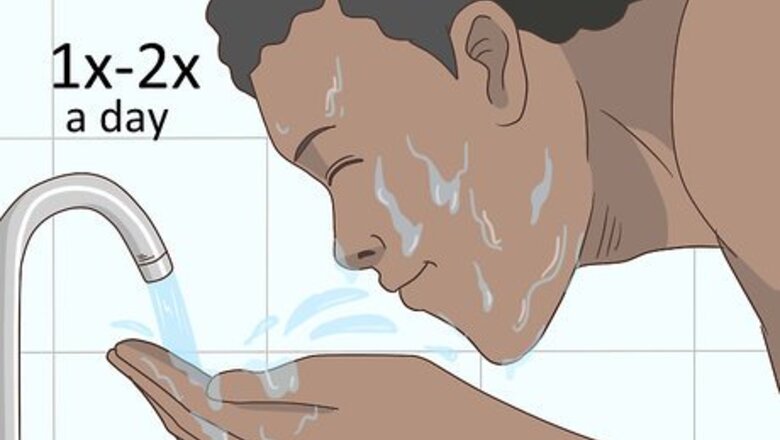
views
Wash your face at least once or twice a day.
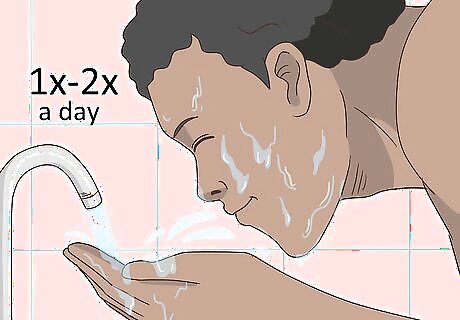
Washing your face will help get rid of all the dirt, grit, and oil on your skin. According to dermatologist Margareth Pierre-Louis, daily face washing also prevents you from developing a mild yeast infection on your skin. Washing your face too often, however, will irritate your skin and strip it of moisture, causing more breakouts. If your skin gets oily during the day, try blotting the oily spots with blotting papers. You can find them in most beauty shops. Avoid using hot water when washing your face. Hot water can strip your skin of the oils it needs to stay healthy. Use warm water instead, and rinse with cool water when you are done. Always wash your face and remove your makeup before going to bed. If you leave makeup on, you may clog your pores and end up with a breakout.
Use a gentle facial cleanser meant for your skin type.
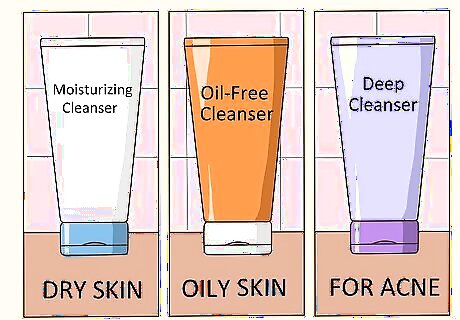
Try finding a cleanser that is also exfoliating to clear dead skin. There are different types of cleansers available, and some are meant to help certain problems, such as acne, oiliness, or dryness. When choosing a cleanser, avoid anything that is heavily perfumed or colored, as it may irritate your skin. Start with a gentle cleanser that you can buy over the counter. If you have dry skin, look for something that says "hydrating" or "moisturizing." If you have oily skin, look for something that is oil-free, or is labeled "for oily skin." If you have acne or blackheads, try using something that says "deep cleaning" or “purifying.” These products will flush out the dirt inside your pores.
Try not to touch your face too often.
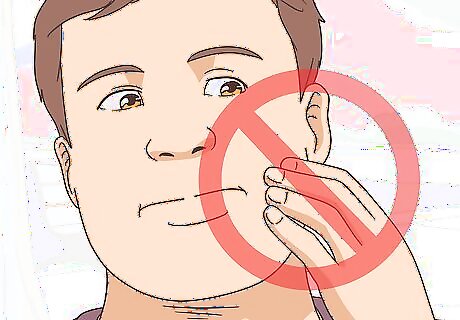
More dirt and bacteria gets into your skin when you touch your face. This is especially important for those battling acne. This will lead to more acne, breakouts, and irritation.
Avoid popping pimples.
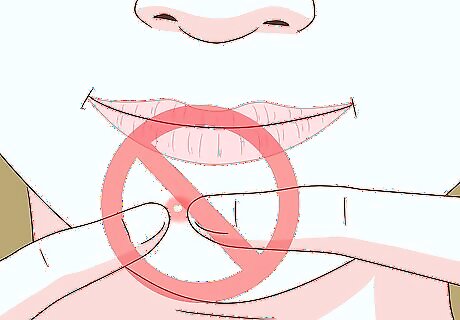
This could lead to more redness, or worse: scarring. Popping a pimple pushes the inflammation deeper into the skin, which can create a scar and make your acne more noticeable. Popping pimples also increases the chance of bacteria from your hands being transmitted onto your skin and causing an infection. To treat a deep, painful pimple at home, apply a warm, damp washcloth to your skin. Soak the washcloth and hot water then apply it to your pimple for 10-15 minutes. Repeat 3 times a day with a clean washcloth each time.
Use a facial toner and moisturizer.
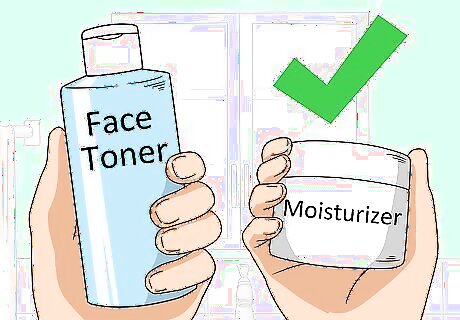
Toners help re-balance your skin's pH and tighten pores. Moisturizers help hydrate your skin. They are great for all skin types, including oily skin. If you have oily skin, try to use a light-weight, oil-free moisturizer.
Choose foundation for your skin type.
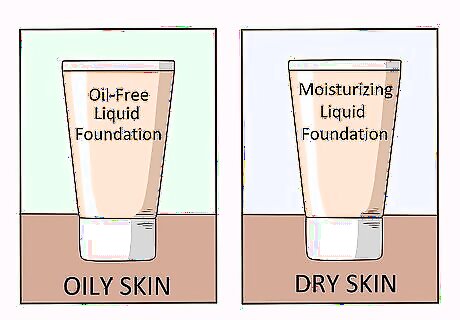
Foundation can make your skin look and feel worse after you take it off. Sometimes, the way you put on your makeup will also make a difference. Also, try using a face primer before putting on foundation. Primers help fill in any pores and imperfections, and make your skin appear more smooth. If you have oily skin, use oil-free, mineral-based makeup. Stay away from cream-based foundation, and reach for the powder or liquid kind instead. Make sure the label on your foundation says “non-comedogenic” (meaning that it will not clog your pores). If you have dry skin, skip on the powder foundation, as this can make your skin look flaky. Instead, use liquid or cream-based foundation. Try to find something that contains naturally moisturizing ingredients like glycerin.
Clean your makeup brushes.
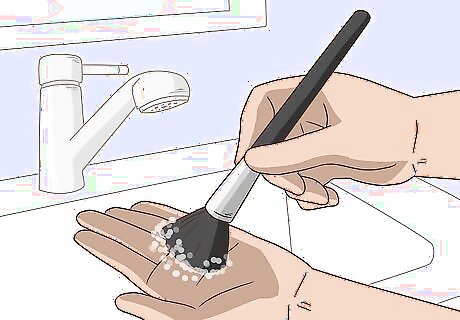
Dirty makeup brushes can spread bacteria onto your face. This may lead to acne, breakouts, and pimples. Clean your brushes every 7-10 days using soap and water or a makeup brush cleaner.
Protect yourself from the sun.

The sun gives you helpful vitamins, but can cause skin damage. Sunlight is not a bad thing, because it gives you Vitamin D, but too much of it can do your skin a lot of harm. Aim for about 20 to 25 minutes of sunlight a day. Too much sunlight can lead to skin cancer and wrinkles. Here are some tips on how to keep yourself safe from the sun's harmful rays: Dermatologist Margareth Pierre-Louis recommends wearing sunscreen with at least 30 SPF. Reapply every 2 hours for continued protection. Try to avoid the sun between 10am and 4pm. It is the strongest during this time. If you are going to spend a lot of time out in the sun, be sure to cover yourself with long sleeves and hats.
Drink 6–8 glasses of water a day.
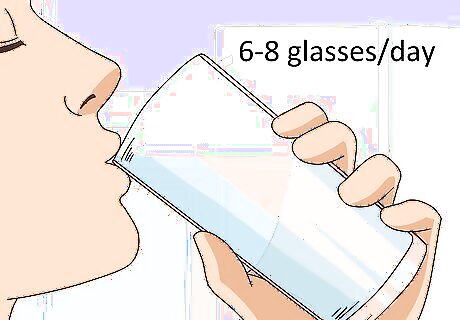
This washes away impurities and leaves your skin with a healthy glow. If your skin looks dull and grayish, drinking more water may help. Water may also help hydrate your skin, which could make it appear firmer and more youthful. In some studies, drinking green tea without added sugar or using green tea extract has also been shown to reduce acne and help add a glow back into aging skin.
Get 7–8 hours of sleep.

Sleep gives your skin time to heal and replenish itself. Try to sleep on your back, instead of on your side or tummy. This may help prevent wrinkles, puffiness, and breakouts over time. Keep your head slightly elevated while you are sleeping in order to prevent fluid buildup in your face.
Eat well for healthy skin.

Foods with vitamins and antioxidants are good for your body and skin. These help your skin look clear and healthy. Here are some things you could add to your diet to improve your skin’s health: Healthy fats are found in avocado, fish, nuts, and seeds. Most of these foods also contain Vitamin E. They help hydrate your skin, and keep it youthful. Selenium is an antioxidant found in broccoli, eggs, fish, nuts, shellfish, and tomatoes. It protects your skin against cancer, sun damage, and age spots. Vitamin C is an antioxidant. It can brighten your skin and give it a healthy glow. It can also lessen blemishes. You can find it in: blackcurrants, blueberries, broccoli, guava, kiwi, oranges, papaya, strawberries, and sweet potatoes. Vitamin E is found in avocados, nuts, seeds, and vegetable oils. It helps slow down aging and makes your skin healthier. Zinc helps repair damage and keeps skin feeling soft. You can find it in fish, lean red meat, poultry, nuts, seeds, shellfish, and whole grains.
Avoid dairy, carbs, and sugar.
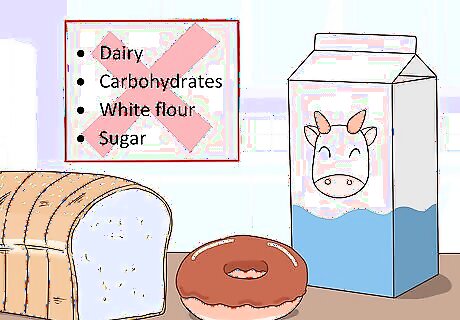
These foods may hurt your skin more than help it. These foods may lead to acne, sagging, and premature aging. When it comes to dairy, dermatologist Margareth Pierre-Louis notes that milk in particular can be connected to acne.
Exercise for at least 30 minutes a day.

Exercising increases blood flow to your skin and keeps it healthy. It may also reduce stress. Too much stress can cause your skin to produce too much oil, which can lead to acne. Try going to the gym or enrolling in some dance or yoga classes. If you do not have the time or money, you can always go for a walk or jog around the block.
Cut back on the stress.
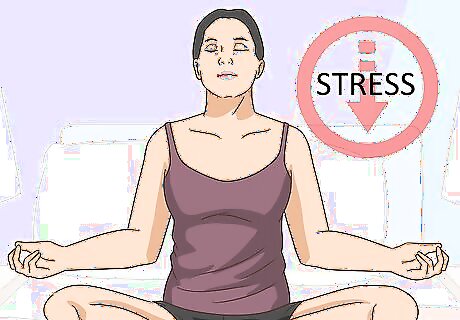
Stress can lead to breakouts and acne. If you can, try to set aside some time during the day or week where you relax, decompress, and de-stress. Here are some ideas on what you can do: Take a walk or exercise. This will help your mind focus on moving, rather than what is stressing you. Try meditating. Find a quiet spot, and focus on your breathing. Be aware of your surroundings, but don't focus on them. Listen to some relaxing or uplifting music. If you are musically talented, you can also try to sing or play music. Try doing some arts and crafts, such as drawing, painting, or knitting.
Try to quit smoking.
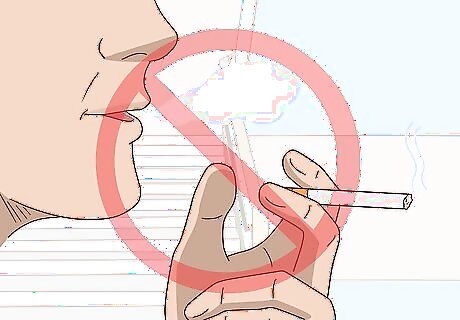
Studies have shown that smoking can lead to premature aging and wrinkles. Try a cessation product or talk to a doctor about your options.
Cut back on alcohol.
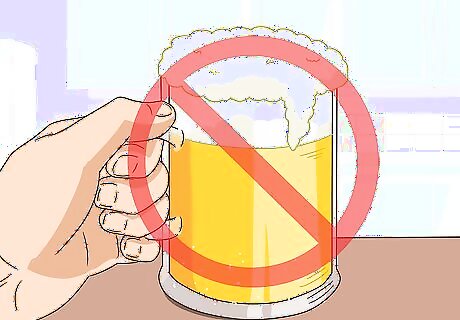
Too much alcohol dehydrates your skin. This contributes to dry skin, fine lines, and wrinkles. It can also keep your body from absorbing enough vitamin A, which is crucial for skin regeneration. Heavy alcohol use may dilate the blood vessels in your face, leading to redness, puffiness, and permanent spider veins. If you do drink alcohol, make sure to drink plenty of water both while you are drinking and after.
Use shea butter as a moisturizer.
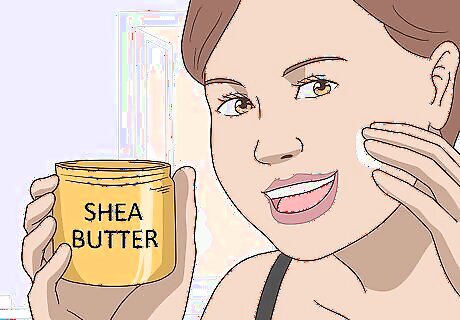
Shea butter is used to soothe redness and inflammation. Shea butter is completely natural, and free of any harmful synthetic chemicals. Simply apply a thin layer of shea butter to your face to help relieve dry skin and ease irritation. Take care to avoid the sensitive areas around the eyes and mouth. Don’t use shea butter on your face if you have oily skin. It may contribute to breakouts or make your skin greasy.
Treat deep wrinkles with fillers.
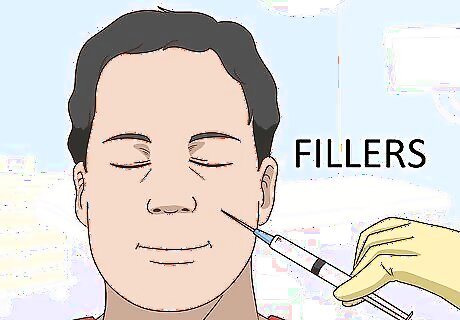
Filler treatments may last anywhere from six months to a couple of years. Fillers are substances that can be injected into the skin to fill in wrinkles and stimulate the production of skin-plumping collagen. Common fillers include: Radiesse, a filler made from tiny calcium beads (lasts about 18 months) Sculptra, a synthetic lactic acid (lasts about 2 years) Hyaluronic acid, a filler with shorter-term effects that last for about 6 months
Improve wrinkles with laser resurfacing.
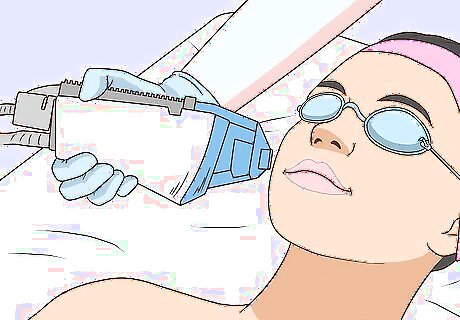
This treats deep wrinkles, but could be painful. Laser treatments can significantly improve the appearance of wrinkles, and the effects may last for several years. Laser resurfacing comes in a couple of different forms: nonablative (which is relatively gentle and superficial) and ablative (which removes the top layers of your skin).
Clear up redness and inflammation with topical medications.

Antibiotics may relieve the underlying cause of redness. Redness on your face can have a lot of different causes, ranging from sun damage or allergies to infection. Depending on the underlying cause of the redness, you may be able to treat it with an antibiotic ointment (such as MetroGel or Sulfacet) or a medication that reduces immune reactions, like Elidel. Consult with a dermatologist to determine the cause of the redness, and come up with a treatment plan.
Treat discoloration with KTP and IPL treatments
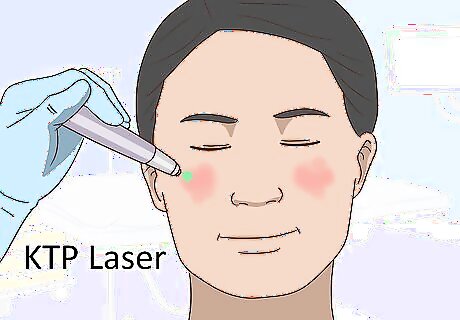
These procedures reduce redness from blood vessels in your skin. KTP laser therapy and intense pulsed light (IPL) treatments are both effective at reducing redness caused by clusters of blood vessels near the surface of the skin. They can also be used to treat hyperpigmentation caused by sun damage, hormonal changes, or injuries to the skin. You may need to do several treatments of KTP laser therapy or IPL therapy over the course of a few weeks to get the desired result.
Get a chemical peel to improve the overall look of your skin.
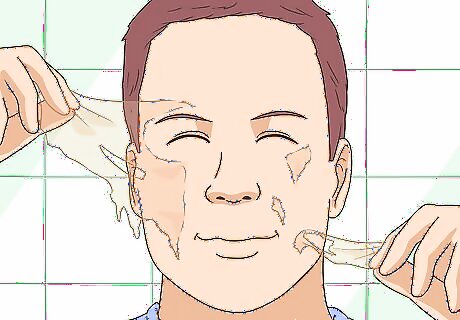
Chemical peels can improve wrinkles, discoloration, and sun damage. According to dermatologist Margareth Pierre-Louis, chemical peels are different from facials and actually alter the surface of the skin. They may even work well on fine lines and scarring too. If you would like to achieve a fresher, more even skin tone, consider getting a chemical peel. Take care to protect your face from the sun after a chemical peel, as your skin’s sensitivity to the sun will be temporarily increased. Some people may experience scarring or discoloration of the skin after a chemical peel.
Treat acne with prescribed medications.
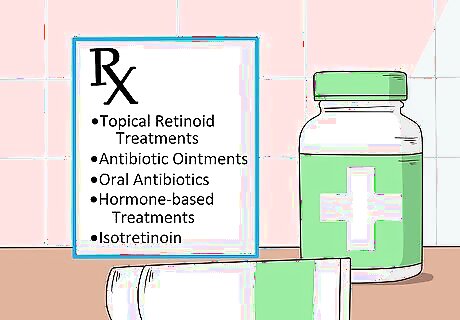
Prescriptions tackle stubborn acne when OTC options don’t work. If your acne won’t respond to over-the-counter treatments or lifestyle changes, talk to your dermatologist. They may be able to prescribe a medication that will work for you. Common medical treatments for acne include: Topical retinoid treatments. Antibiotic ointments, often used in combination with retinoids. Oral antibiotics. Hormone-based treatments, such as oral contraceptives (the pill) or anti-androgen agents. Isotretinoin. This medication is very effective, but because of the risk of severe side effects, it is only used to treat extremely severe and difficult to treat cases of acne.
Make a banana face mask to treat oily skin.
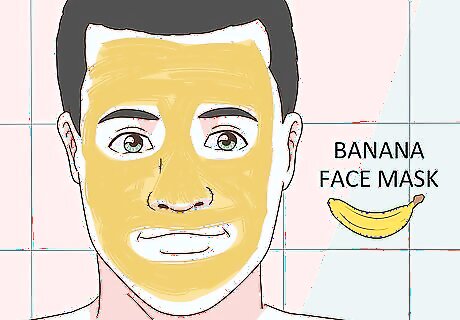
Some people believe that bananas and honey give their face a healthy glow. You will need 1 ripe banana, 1 teaspoon (5 ml) of honey, and 2 teaspoons (10 ml) of lemon juice. Mix everything together in a small bowl and smooth it onto your face. Let the mask sit for 15 minutes, then wash it off using cool water. Keep in mind that while raw, unprocessed honey does contain antibacterial properties to calm redness, it isn’t proven to keep breakouts away.
Brighten dry, dull skin with a Greek yogurt mask.
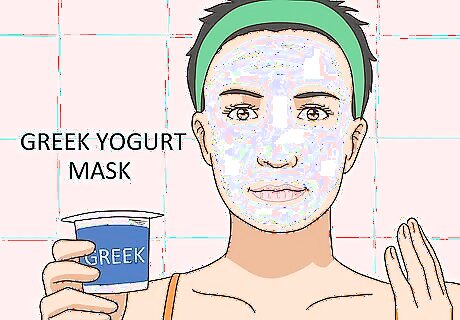
Some studies show that yogurt helps moisturize your skin. Mix 2 to 3 tablespoons (29.6 to 44.4 ml) of Greek yogurt with 1 to 2 teaspoons (5-10 ml) of honey. Apply the mixture to your face, taking care to avoid the area around the eyes. Leave it on for 20 minutes, then wash it off with warm water. Yogurt and other skincare products have been shown to improve skin health in some cases. You can also add some blueberries. They are full of antioxidants, which makes them great for treating acne. You will need to mix your face mask in a blender to get everything smooth. You can also use plain yogurt, without any honey, lemon, or blueberries.
Try the oil cleansing method.
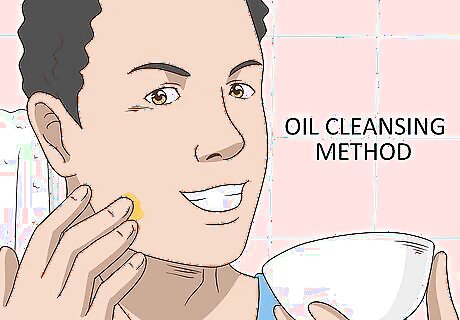
Massaging oil into your skin could actually relieve acne. Start with a dry face. Your skin does not have to be clean. Mix together some of the oils from the list below, and massage a quarter-sized drop onto your face. Avoid the eyes and mouth. Keep massaging, using a smooth, circular motion, for one to two minutes. Dampen a washcloth in hot water, and press it against your face. Repeat, if necessary, with the other side of the cloth. Use the corners to dab excess oil away from the hard-to-reach parts of your face, such as the nose. You may notice some oily residue, which is normal and actually helpful. Keep in mind that it may take a few days for your skin to get used to this; your skin may get worse before it gets better. Here are some combinations to get you started: If you have oily skin, use 1 part castor or hazelnut oil and 2 parts sunflower, grapeseed, or sweet almond oil. Hazelnut and sunflower oil are a great combination for acne. If you have combination skin, use 1 part castor or hazelnut oil and 3 parts sunflower or any other oil. If you have dry skin, go for pure avocado, apricot kernel oil, jojoba, or grapeseed oil. Use very little to no castor oil. Keep in mind that jojoba oil may clog pores, however, many studies show it can help mild acne. Avoid using coconut oil or olive oil. Both tend to clog pores, which leads to breakouts.
Make a face scrub to brighten and clarify your skin.
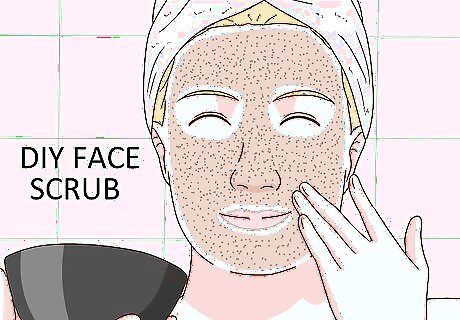
You might even have most of the ingredients in your pantry already. Simply combine oil and salt or sugar in a small bowl. Mince the fruit or vegetable of your choice, and add it in. You want to use just enough fruit or veggies to thicken the scrub, but not so much that it becomes clumpy. Massage the scrub onto a damp face for a few minutes, then rinse it off using warm water. Store any leftovers in the fridge for up to 2 weeks. Here are some recipes to get you started: To make a moisturizing mask, you will need 2 parts salt, 1 part olive oil, and tomato pulp. To make a clarifying mask, you will need 2 parts sugar, 1 part safflower oil, and a peeled kiwi. To brighten your skin, you will need 2 parts sugar, 1 part almond oil, and strawberries. If you have sensitive skin, try making a soothing mask. You will need 2 parts brown sugar, 1 part avocado oil, and a peeled cucumber. You may also want to try a gentler form of exfoliation like a washcloth with a mild chemical exfoliator.
















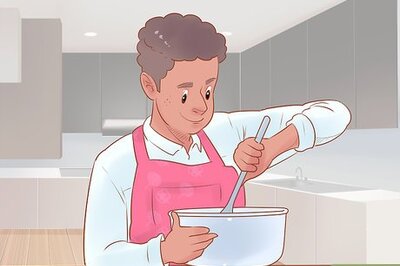
Comments
0 comment